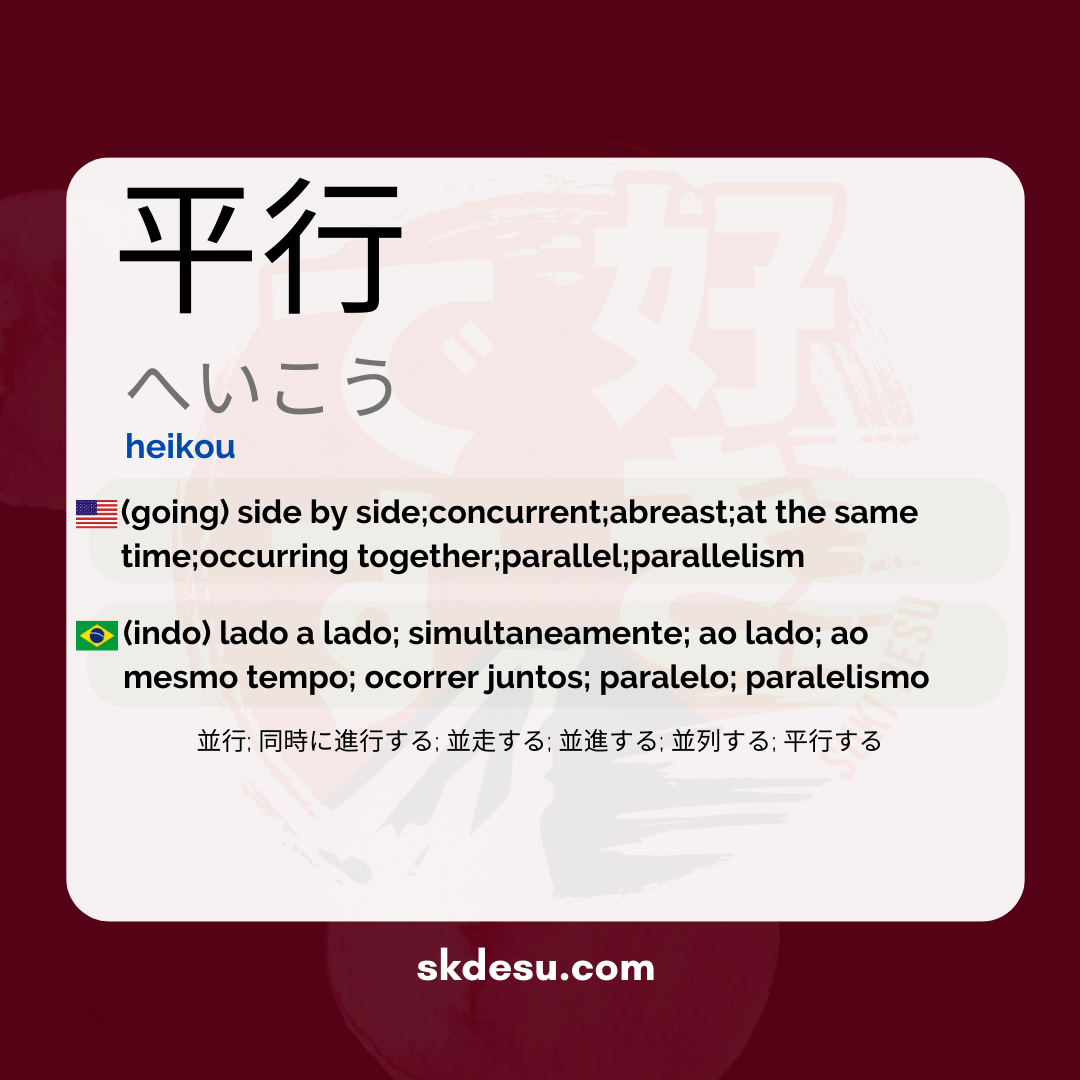Translation and Meaning of: 平行 - heikou
The Japanese word 「平行」 (heikou) is composed of two characters: 「平」 and 「行」. The first character, 「平」 (hei), generally means "flat" or "level," while the second, 「行」 (kou), signifies "line" or "path." Together, these kanji form a term that translates to "parallel" in various applications, especially in mathematics and physics. Therefore, 「平行」 refers to lines or objects that are always equidistant from each other and never meet.
Originating from practical application in geometry, the expression heikou is often used in academic and scientific contexts when discussing figures and geometric shapes. Outside of this field, the word finds application in areas such as physics, where objects or vectors aligned parallelly can be described as 「平行」. The fundamental idea is the maintenance of a constant distance, emphasizing a form of stability or balance.
In addition to its technical use, 「平行」 can appear in more figurative contexts. For example, when describing events or developments that occur simultaneously and are comparable but not necessarily related, people may use this word to emphasize the simultaneity and independence of these occurrences. This reflective use of language illustrates the semantic flexibility of Japanese, where a single term can capture nuances in multiple contexts. This flexibility allows 「平行」 to encompass a broader range of meanings beyond its initial technical application.
Vocabulary
Expand your vocabulary with related words:
Synonyms and similar words
- 並行 (へいこう) - Execute simultaneously, in parallel; it may refer to actions that occur at the same time, but with an emphasis on their parallelism.
- 同時に進行する (どうじにしんこうする) - Advance simultaneously; emphasizes that actions are happening at the same time, without necessarily implying parallelism.
- 並走する (へいそうする) - Run side by side; used to describe situations where objects or people are moving alongside each other.
- 並進する (へいしんする) - Advance in parallel; similar to the concept of moving forward at the same time, but with an emphasis on straight-line movement.
- 並列する (へいれつする) - Place in parallel; usually used in contexts such as circuits or structures, where entities are arranged side by side.
- 平行する (へいこうする) - Be parallel; it can be used in a broader sense that includes objects or actions that maintain the same direction and distance.
Related words
Romaji: heikou
Kana: へいこう
Type: noun
L: -
Translation / Meaning: (indo) side by side; simultaneously; beside; at the same time; occur together; parallel; parallelism
Meaning in English: (going) side by side;concurrent;abreast;at the same time;occurring together;parallel;parallelism
Definition: facing the same direction or position.
Quick Access
- Vocabulary
- Writing
- Sentences
How to Write in Japanese - (平行) heikou
See below a step-by-step guide on how to write the word by hand in Japanese. (平行) heikou:
Example Sentences - (平行) heikou
See below some example sentences:
Heikōsen wa eien ni majiwaranai
Linhas paralelas nunca se encontram.
The parallel line will not be exchanged forever.
- 平行線 (heikou-sen) - parallel lines
- は (wa) - Topic particle
- 永遠に (eien ni) - forever
- 交わらない (mawaranai) - do not cross
Other Words of this Type: noun
See other words from our dictionary that are also: noun

